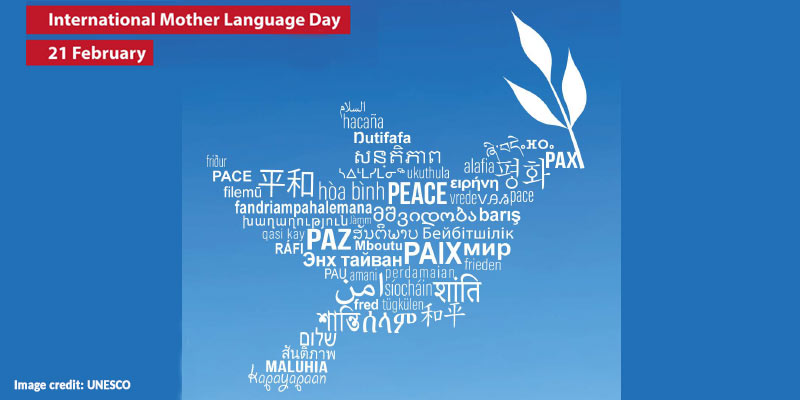- World
- Feb 21
Explainer / International Mother Language Day
The United Nations observes February 21 as International Mother Language Day with the aim of preserving linguistic diversity and promoting mother tongue-based multilingual education.
Background
The idea to celebrate International Mother Language Day was the initiative of Bangladesh.
International Mother Language Day was proclaimed by the General Conference of the United Nations Educational, Scientific and Cultural Organization (UNESCO) in November 1999. The UN General Assembly welcomed the proclamation of the day in its resolution of 2002.
On May 16, 2007 the United Nations General Assembly in its resolution called upon Member States “to promote the preservation and protection of all languages used by peoples of the world”.
Languages, with their complex implications for identity, communication, social integration, education and development, are of strategic importance for people and the planet. Yet, due to globalisation processes, they are increasingly under threat, or disappearing altogether.
Linguistic diversity is increasingly threatened as more and more languages disappear. One language disappears on average every two weeks, taking with it an entire cultural and intellectual heritage.
When languages fade, so does the world’s rich tapestry of cultural diversity. Opportunities, traditions, memory, unique modes of thinking and expression — valuable resources for ensuring a better future — are also lost.
At least 43% of the estimated 6,000 languages spoken in the world are endangered. Only a few hundred languages have genuinely been given a place in education systems and the public domain, and less than a hundred are used in the digital world.
Globally 40 per cent of the population does not have access to an education in a language they speak or understand. Nevertheless, progress is being made in mother tongue-based multilingual education with growing understanding of its importance, particularly in early schooling, and more commitment to its development in public life.
Multilingual and multicultural societies exist through their languages which transmit and preserve traditional knowledge and cultures in a sustainable way.
This year’s theme
The theme of the 2021 International Mother Language Day, “Fostering Multilingualism For Inclusion In Education And Society,” recognises that languages and multilingualism can advance inclusion, and the Sustainable Development Goals’ focus on leaving no one behind.
Languages in India
According to Census 2011, there are 121 languages which are spoken by 10,000 or more people in India.
The Registrar General and Census Commissioner has said that 96.71 per cent population in the country have one of the 22 scheduled languages as their mother tongue.
The 121 languages are presented in two parts — languages included in the Eighth Schedule of the Indian Constitution, comprising 22 languages and languages not included in the Eighth Schedule, comprising of 99 languages plus the category “total of other languages”, which includes all other languages and mother tongues which returned less than 10,000 speakers each at the all-India level or were not identifiable on the basis of the linguistic information available.
The Eighth Schedule of the Constitution consists of the following 22 languages —
1) Assamese
2) Bengali
3) Bodo
4) Dogri
5) Gujarati
6) Hindi
7) Kannada
8) Kashmiri
9) Konkani
10) Malayalam
11) Manipuri
12) Marathi
13) Maithili
14) Nepali
15) Odia
16) Punjabi
17) Sanskrit
18) Santhali
19) Sindhi
20) Tamil
21) Telugu
22) Urdu.
Manorama Yearbook app is now available on Google Play Store and iOS App Store

